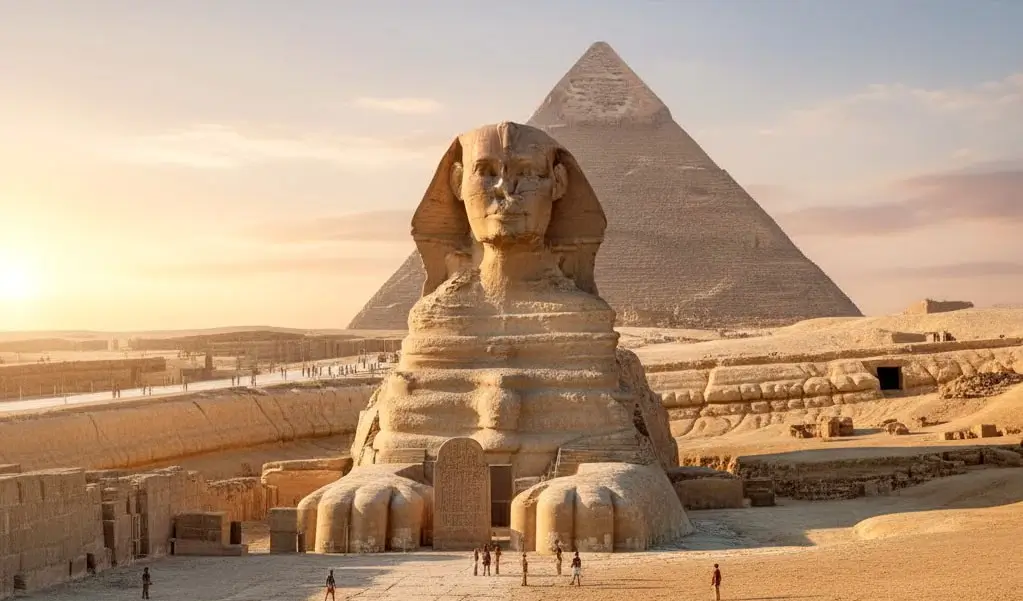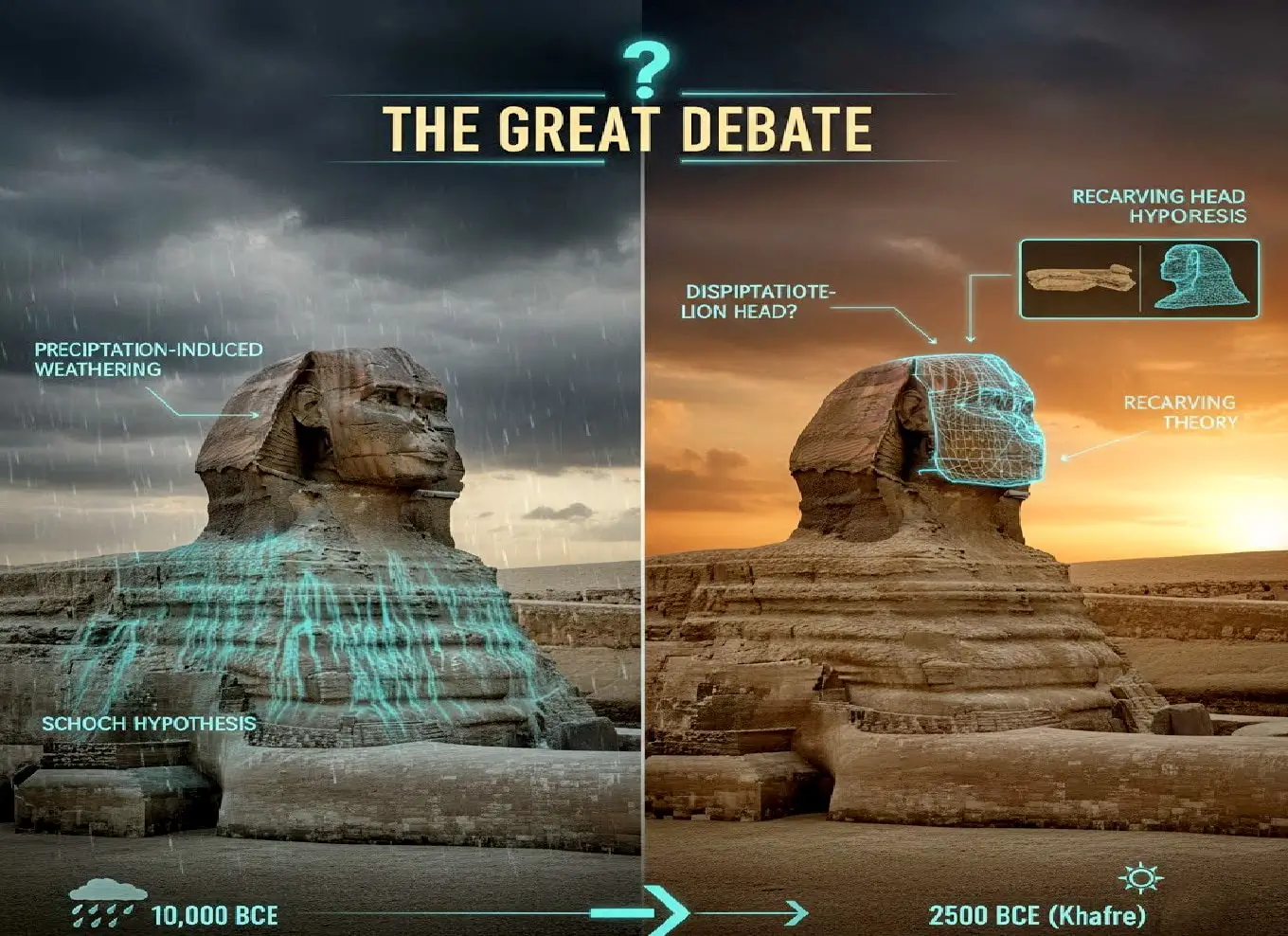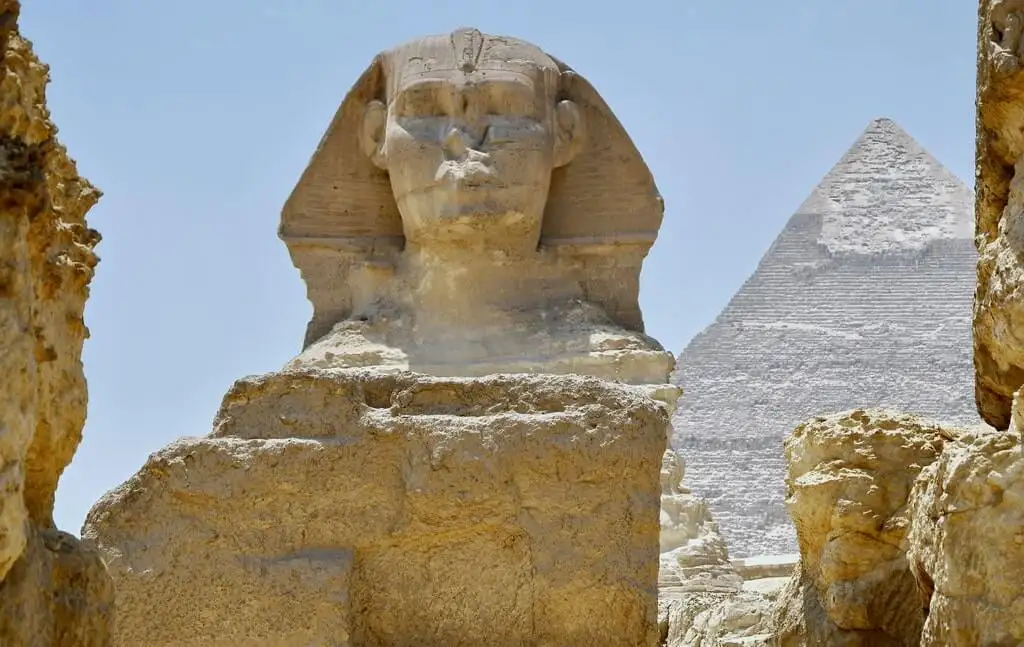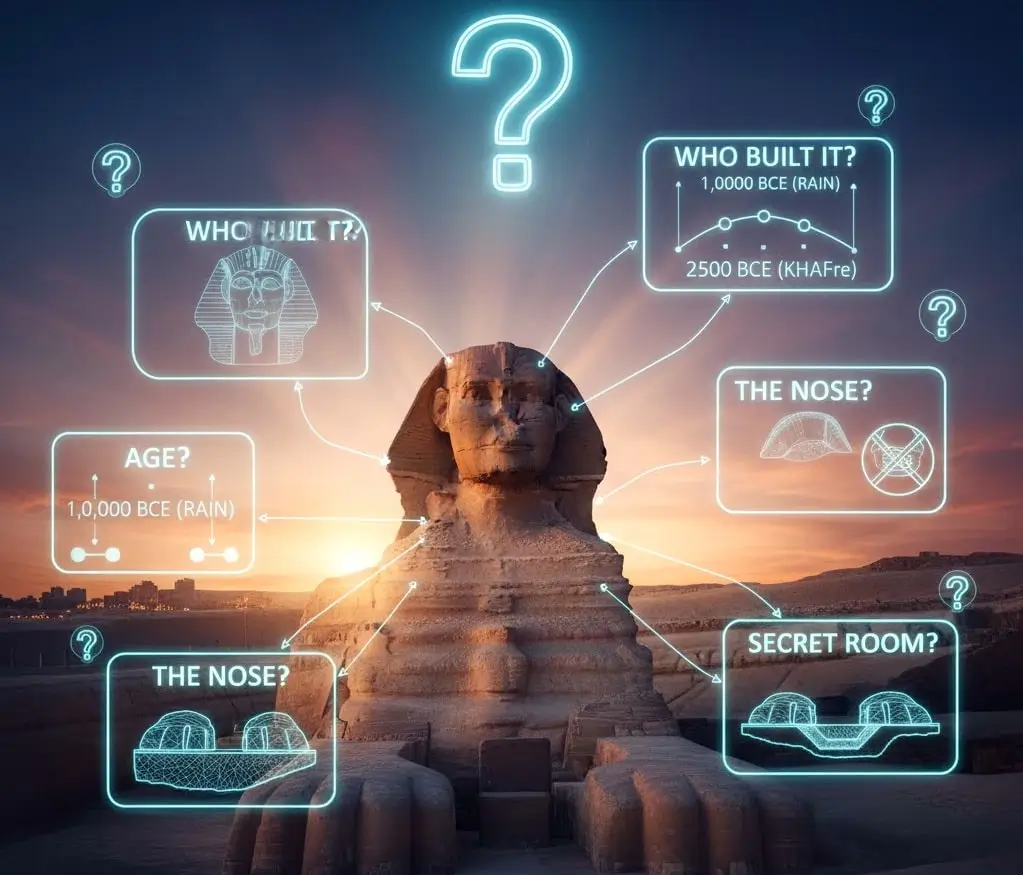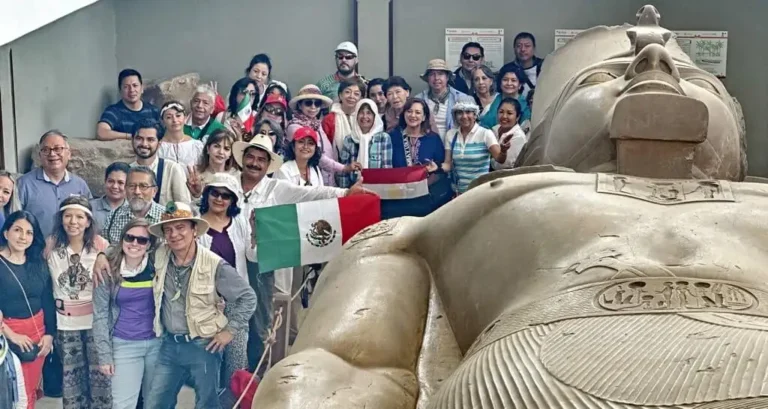The Guardian’s Riddle: Why the Sphinx Remains a Mystery
For 4,500 years, a colossal statue with the body of a lion and the head of a human has gazed eternally over the Giza plateau. The Great Sphinx is the world’s largest monolith, a guardian carved from a single, massive limestone bedrock. But its true riddle is not one of words, but of stone, sparking countless Sphinx theories about its true origin and purpose.
Here is the heart of the mystery: no ancient inscriptions from the Old Kingdom, the era when Egyptologists say it was built, ever mention its construction. This “thundering silence” is the source of all the debate. We have no confirmed builder, no official name, and no contemporary texts explaining its purpose. Consequently, this lack of a clear origin story has left the Sphinx a blank slate, inviting generations of researchers and thinkers to propose fascinating and often conflicting Sphinx theories.
Key Takeaways
- Orthodox View: Most Egyptologists believe the Sphinx was built by Pharaoh Khafre around 2500 BCE.
- The Core Debate: The “Water Erosion Theory,” championed by Robert Schoch and John Anthony West, suggests the Sphinx is thousands of years older (c. 10,000 BCE).
- Key Mysteries: The main debates cover its age, its original form (was the head recarved?), its purpose, and the “Hall of Records” supposedly hidden beneath it.
- The Nose: The mystery of the missing nose is solved: It was not Napoleon.

